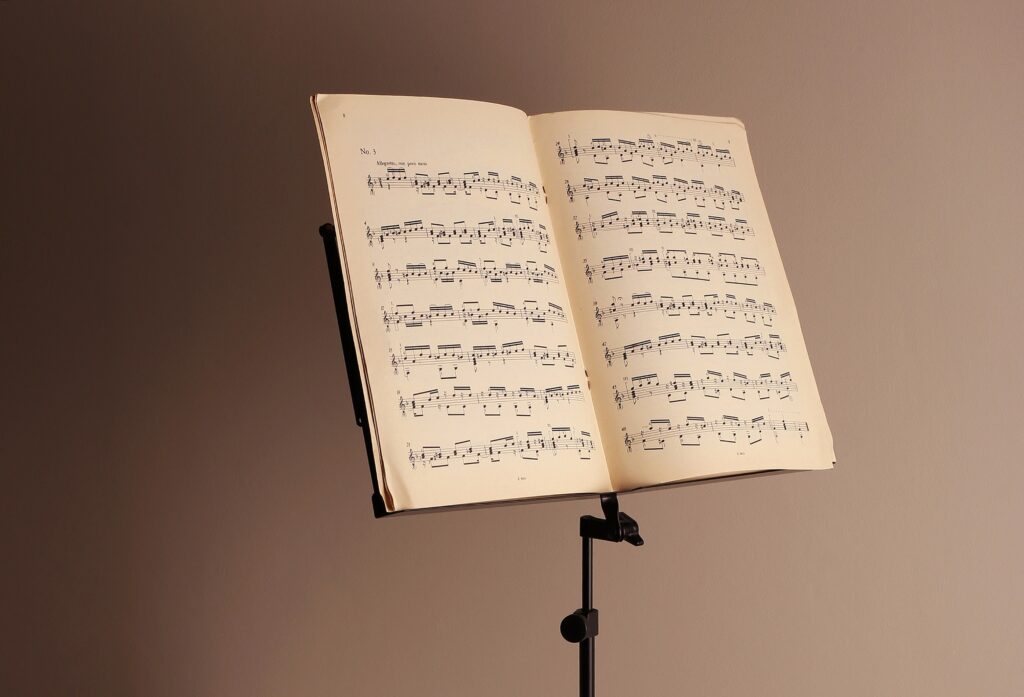
Teaching sight reading is an invaluable skill for band directors that can be learned. What follows is a systematic approach to improve your ensemble.
Tone production
If your tone production is poor then your sight reading ability will be irrelevant. Work on long tones and lip slurs every day. Matt Harloff‘s Inside the Circle warm ups work well, or make up your own. The point is to create a routine that the kids expect. It isn’t sexy. It’s work. Embrace the suck and dive into the repetition.
Rhythm
Next, be sure your band can read rhythms. Start with simple unison rhythms and work your way up.
My beginning and middle school bands play 2-4 unison rhythm exercises every day. We count, we clap and we play. Everyone must become musically literate and that means being adept at reading basic rhythms.
In high school, I rely on the sight reading factory website. If you aren’t using this, you are missing out on an invaluable tool for the development of your students.
Again, count, clap and play. Be ruthless and repetitious. Results will take time.
Key Signatures
Scales, scales, scales. Work on scales. Start with C, F, Bb and Eb. These four scales will get you through an enormous amount of band literature. Play them every day and play them in the above order. Remind the kids that a march will almost always have a key change and that the key change will add a flat (take a sharp away).
Point out the key signature for each scale. Explain what they mean. Roll up your sleeves and get into the dirty work here. The payoff is immense!
Posture
There are two types of posture; physical and mental. The students need to be on the front edge of their chairs when they sight read. And, their minds need to be sharp.
NO ONE STOPS! Go into sight reading with this credo. We will make it to the end and we will keep going. When we make mistakes we will keep going. If we get lost, we will keep our instruments in playing position and passionately look for cues that will get us back on track.
Now you can start
Begin with some simple reading. Sight reading factory allows you to create tailored sight reading samples. You can choose key, time signature and rhythms. Their ensemble examples max out at 24 measures.
High school bands can sight read middle school music. Middle school bands can sight read smaller chunks of a song, or an exercise. The goal is to build confidence by starting as easy as possible.
Director direction
The director should lead the sight reading.
What is the title? Is the song a march? Point out the tempo and any expressions that indicate the style of the song. Then move on to the key signature.
Go over the roadmap of the song. Is there a key change? Are there any repeats, D.C.’s, D.S.’s, first and second endings, etc. This all should happen quickly. Have the students repeat if you feel they aren’t with you. “There’s a repeat at 25!…. Where?”. Expect them to respond aggressively.
Sizzling
Sizzle the music. But, …here is the key! The performers MUST finger the notes as they sizzle. If you sizzle without fingerings, you are only getting the rhythms. When the students do their fingerings, they can identify trouble spots before they start playing.
Be emphatic in this regard. You do not want to hear them play unless they have fingered through their parts first. Percussionists should be working out sticking.
Also, the sizzling should be loud enough to be heard. You want them to get dizzy if possible. Air, air, air!! Loud, bold sizzling helps the students to think about the air support necessary to make good tone and solid phrasing. A dizzy sight reader is a good sight reader.
Lather, rinse, repeat
None of this does any good unless you are willing to systematically repeat the process. Teaching sight reading isn’t a puzzle. It’s all about repetitive work. If you settle in and get to work your band can learn to sight read well.
